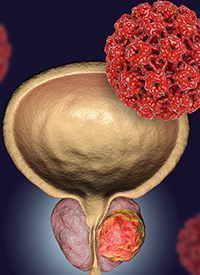Neoadjuvant Tislelizumab/Nab-Paclitaxel Combo Produces Early Activity in MIBC
The combination of neoadjuvant tislelizumab and nab-paclitaxel elicited a high rate of pathologic complete response in patients with muscle-invasive bladder cancer, according to preliminary findings from the phase 2 TRUCE-01 trial.

The combination of neoadjuvant tislelizumab and nab-paclitaxel (Abraxane) elicited a high rate of pathologic complete response (pCR) in patients with muscle-invasive bladder cancer (MIBC), according to preliminary findings from the phase 2 TRUCE-01 trial (NCT04730219) presented during the 2022 American Urological Association Annual Meeting.
Investigators of the single-arm, open-label phase 2 trial did not observe an increase in adverse events (AEs) or a correlation of PD-L1 expression with the efficacy of the neoadjuvant therapy. However, high tumor mutation burden (TMB) did show a correlation to response with the combination.
Neoadjuvant treatment with immune checkpoint inhibitors showed comparable efficacy and fewer AEs than chemotherapy in the PURE-01 trial (NCT02736266) of pembrolizumab (Keytruda) and the ABACUS trial (NCT02662309) of atezolizumab (Tecentriq) in MIBC. Although, at this point, the efficacy of combination chemotherapy and PD-1/PD-L1 inhibition has not been determined. This study in patients with MIBC is evaluating the PD-1 inhibitor tislelizumab combined with second-line chemotherapy in the neoadjuvant setting.
In the ongoing TRUCE-01 trial, patients with stage T2-4aN0-1M0 disease were given 200 mg of tislelizumab on day 1 and 200 mg of nab-paclitaxel on day 2 every 3 weeks for 3 cycles, followed by complete transurethral resection of bladder tumor (cTURBT) or radical cystectomy. The Dako 22C3 pharmDx assay was used to conduct biomarker analysis on PD-L1 expression using combined positive score. TMB was also evaluated for the analysis. The primary end point was pCR, defined as the absence of a viable tumor (pT0N0M0).
Thirty patients completed this regimen of neoadjuvant tislelizumab plus nab-paclitaxel and received a radical cystectomy (n = 9) or cTURBT (n = 21) between July 2020 and July 2021. A total of 16 patients achieved pCR (53.3%; 95% CI, 36.7%-73.3%). Downstaging to pT less than 2 occurred in 21 patients (70%; 95% CI, 53.3%-86.7%), which was a secondary end point in this trial.
Patients who responded to therapy had a higher TMB level than those who did not respond (P = .067). No significant correlation was observed between PD-L1 expression and the efficacy of the tislelizumab/nab-paclitaxel combination. Eight patients with PD-L1–positive expression achieved pT0 versus 8 patients with PD-L1–negative expression (P = .484).
In terms of AEs, 1 patient experienced grade 3 rash and 1 patient had grade 4 acute renal failure. After corticosteroid treatment, both patients recovered. Alopecia was observed in 96% of patients, fatigue in 63%, hyperglycemia in 33%, rash in 27%, fever in 17%, and creatinine increase in 13% were the most common grade 1 or 2 AEs.
TRUCE-01 is currently enrolling adult patients with histopathologically confirmed urothelial carcinoma who are planning to receive a cTURBT or radical cystectomy. Patients must have an ECOG performance status of 0 to 2 and an expected survival over more than 12 weeks. Patients who have previously received a PD-1, PD-L1, or CTLA-4 antibody or other immunotherapies are not able to participate in this trial. The trial is located at Tianjin Medical University Second Hospital in Tianjin, China.
Reference
- Hu H, Niu Y, Wang H, et al. Update of TRUCE-01: neoadjuvant tislelizumab combined with nab-paclitaxel for muscle-invasive urothelial bladder carcinoma. Presented at: 2022 American Urological Association Annual Meeting; May 13-16, 2022; New Orleans, LA. Abstract PD10-07



